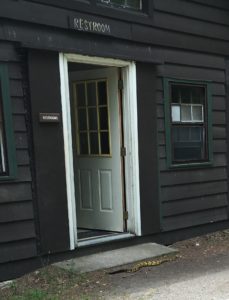Hello fellow readers, Chipmunks are darn cute but often the most frustrating garden pest, even more so than deer primarily because there’s no effective spray or fencing to keep them out. So what’s the best chipmunk control? The jury is out.
Barbara from Succasunna, NJ, writes, “They were digging holes all around my patio. By spraying Critter Ridder once a week now, I only see a few occasionally.”
Topical sprays aren’t typically beneficial.
Made of black and chili pepper derivatives, Critter Ridder is organic gardening compliant. Bravo Barbara, at least the critters that have a yen for spicy food, will remain healthy. Chipmunks tunnel to eat roots, which is why topical sprays aren’t terribly useful.
About Chipmunks
Penn State University says there are often two to four chipmunks per acre, though as many as ten per acre can hunker down if there’s enough food and cover. My rock wall may be the capital of several acres as there seem to be armies of them scurrying around. Worrisome as they can cause structural damage. They live about three years, breed twice a year, and have two to five young who then have their own young’ uns within a year. You do the math.
As they build their 20 to 30-foot multi-tunnel abodes, they stuff the dirt into their cheeks then deposit it elsewhere, hence no mounds at their entry hole. How stealth. This same cheek stuffing strategy is how they carry their stash of seeds, bulbs, tender roots, and root vegetables into their homes to dine on through the winter. Chipmunks eat insects and slugs too. But before you put a check in the ‘what they’re good for column,’ they eat eggs and baby birds also.
Snap & Live Traps, Bates, & Juicy Fruit Gum (?) for chipmunk control
There are snap traps, poisonous bates, and live traps to relocate them, though I’ve heard by moving them even 10 miles away, they are likely to return. Then there’s the issue of who will be the lucky recipient of your transport.
Someone suggested juicy fruit gum. Unwrapped (using gloves to keep free of human scent) and tossed in their holes. The theory is they eat the gum, which buggers up their innards. Not very humane, I know. But neither is eating roots causing plants to suffocate, poor dears. The punchline is my chipmunks like juicy fruit gum, and it seems they invited their friends to join the party. Maybe they’ll croak from rotting teeth.
A DIY method for chipmunk control may do the trick.
Of all the techniques, a quarter-cup of castor oil (the original stinky kind) mixed with a gallon of warm water and a couple of drops of dish detergent to saturate the ground near the holes sounds like the most promising way to evict them. They hate the smell and bitter taste. Work your way out so as not to encourage them to hunker down near your foundation. Or, you can always adopt a cat or invite a garden snake (maybe not a rattlesnake).
Garden Dilemmas? AskMaryStone@gmail.com (and your favorite Podcast App.) Column updated 10/16/21
You’ll enjoy more of the story in Episode 66 of the Garden Dilemmas Podcast.
You’ll get a chuckle reading a previous garden dilemma thanks to chipmunks- Tomato Carnage.
You can see why Ann, a kind animal lover, opted to move the chipmunks taking over her beautiful garden. Photo by Ann DeCamp Photography

I photographed Mr. Rattlesnake at Camp Mohican in Blairstown, NJ. Good thing he opted out of the Dining Hall. It says a lot about camp food :^)
Thumbnail chipmunk photo compliments of Pixabay




